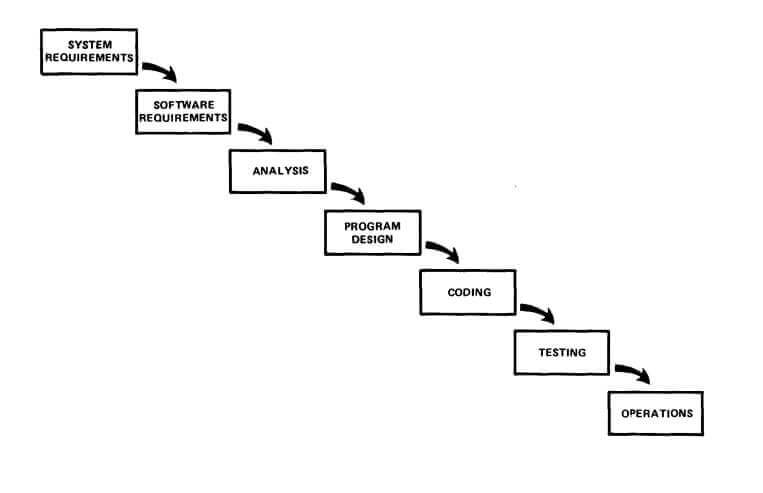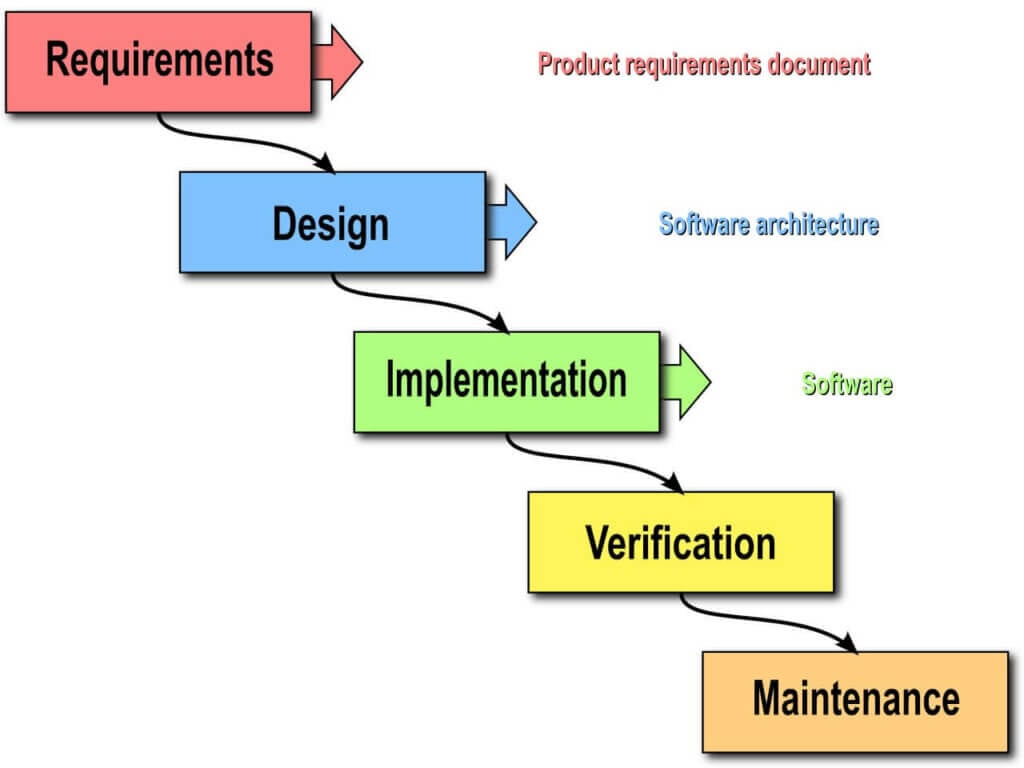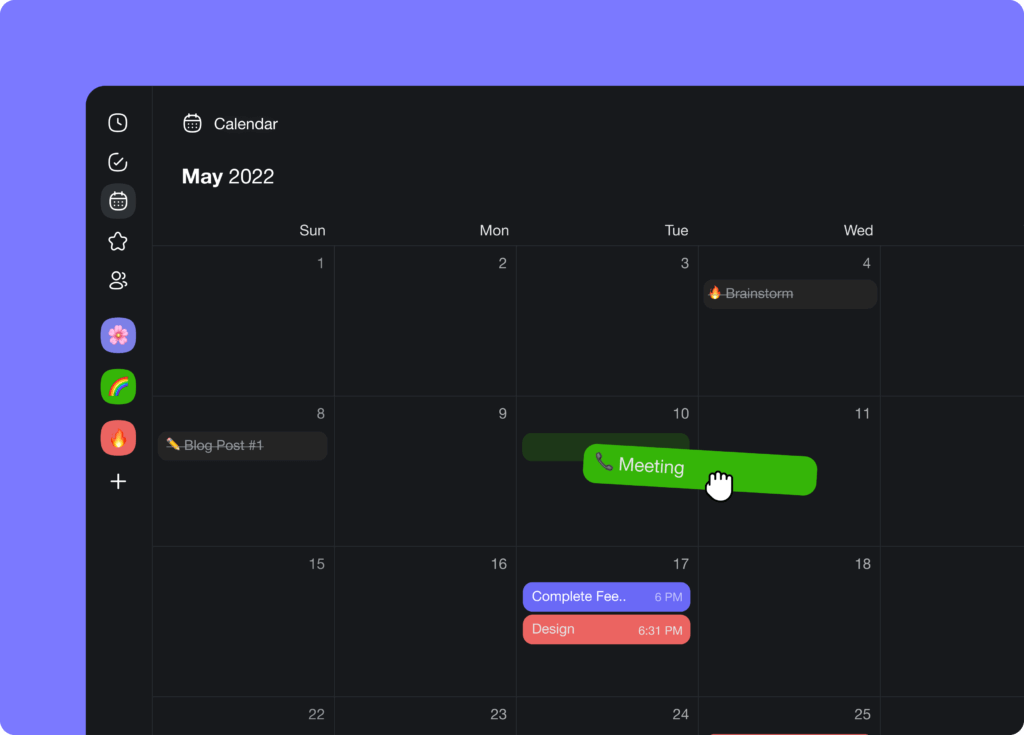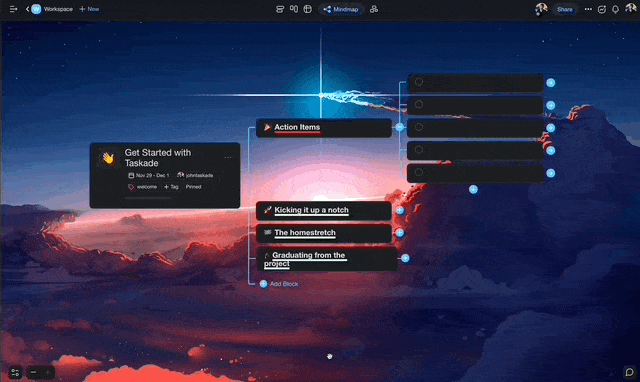Waterfall Project Management: Your Complete Guide (Updated 2024)
The Waterfall project management methodology is a “traditional” PM approach. Created in the 70s, the model is designed for clear-cut, linear projects with upfro...
The Waterfall project management methodology is a “traditional” PM approach. Created in the 70s, the model is designed for clear-cut, linear projects with upfront requirements and firm milestones. While iterative methodologies like Agile have pushed Waterfall out of software development, the model is still popular in industrial, engineering, and construction projects.
Here's everything you need to know about the Waterfall methodology! 👇
🤔 What Is the Waterfall Project Management Methodology?
The Waterfall project management methodology is one of the classic takes on project management. Unlike Agile which is iterative and based on cycles, the Waterfall model divides projects into linear, sequential phases that unfold one after another.
The Waterfall approach has been successfully used in:
🏗️ Large-scale construction
🛠️ Engineering projects
🏭 Industrial applications
🧑💻 Software development
It’s difficult to tell when the Waterfall methodology came on stage. Some attribute it to computer scientist Winston W. Royce and his 1970 article “Managing the Development of Large Software Systems.”(1) While Royce didn’t use the term "waterfall"—it was first recorded in a 1976 paper “Software Requirements: Are They Really a Problem?”(2)—he set the groundwork for the model.

Royce's implementation steps from
“Managing the Development of Large Software Systems”(1)
In Royce’s design, the yet-unnamed approach divided a project into seven phases the project team had to complete in a linear, sequential manner. The flow included System Requirements, Software Requirements, Analysis, Program Design, Coding, Testing, and Operations.
🏔 5 Phases of Waterfall Project Management
Each phase in the Waterfall process is a separate entity. Unlike Agile where there’s room for innovation and flexibility, the Waterfall approach requires the project team to complete phases one after another. These days, most projects use a 5-step process drawn from Royce’s design.

Waterfall model of system development
by Peter Kemp / Paul Smith via Wikipedia(3)
Requirements Phase
During the requirements phase, the project manager gathers and analyzes requirements from clients. The project team then prepares documentation they will use in the next phases. Project requirements in the Waterfall model don’t change, so this is a critical part of the process.
The project requirements document usually includes costs, risks, timelines, and project duration, among other details. The entire team needs to understand those requirements before they can move on. Any omissions and mistakes in this phase can compound in the design and implementation phases.
Design Phase
With the requirements and documentation in place, the team creates a systems design that will help them meet the client’s expectations. Engineers then come up with a solution to the problem defined in the requirements. The project team also decides on the technology and languages (if it's a software development project) they will use.
This phase is usually divided into a high-level design phase (HLD) and a low-level design phase (LLD). HLD covers the overall architecture of the end product/service with a brief description of each module. LLD is a detailed plan of how those modules will be implemented and tested.
Coding / Implementation Phase
This is where the real work begins. The project team starts building the actual product/service. In software development, the implementation is usually done in increments (units) that are later integrated. The project team may decide to conduct preliminary testing at this stage.
This is also the most time-consuming part of the process. Depending on the nature of the project, the implementation can be anything from writing source code to pouring the foundation. At this point, the team has an excellent understanding of project requirements.
Verification / Testing Phase
Once the deliverables are ready, the project team can start looking for bugs and other issues that may plague end users. This is usually the responsibility of the testing team. The verification phase ensures that the product/service works according to initial requirements.
Due diligence during the Requirements and Design helps the project team save time they’d have to spend fixing things after deployment. The better the documentation and project requirements, the shorter the testing phase gets. Testing usually concludes with a test report.
Deployment and Maintenance Phase
In the final phase, the product/service goes live. Once the product is operational and in the hands of users, the project enters a maintenance phase. The team actively works on any outstanding issues missed during testing and pushes updates according to client feedback.
The maintenance stage can last until the product or service is retired. The team may focus on corrective (issues and bugs), adaptive (new features), perfective (user requests), and preventive maintenance. The maintenance phase makes up a substantial part of the project lifecycle.
⚡ The Benefits of Waterfall Project Management
Clear Requirements and Documentation
Diligent research and documentation are key in the Waterfall approach. The process is slower than Agile, but it provides more predictable milestones and outcomes. This helps prevent many of the issues that pop up in iterative models focused on momentum and innovation.
Less Budget and Scope Creep
Methodologies like Scrum often run into scope/budget creep. With milestones and goals set upfront, Waterfall makes it much easier to track progress and stay within set requirements. That makes it a great choice for projects with non-negotiable budgets and fixed timelines.
A Foundation for Future Projects
The stress on research and planning gives the development team a pool of knowledge they can rely on during Implementation and Maintenance. On top of ongoing support, it also helps create task templates and workflow blueprints for reuse across similar projects in the future.
🌟 Waterfall Project Management Best Practices
Decide if Waterfall Is a Good Match
Before you dive head first into Waterfall (pun not intended), you need to make sure that it's the right approach for the project at hand. Are the requirements clear enough? Does the project demand high flexibility and continuous iterations? Has the linear, sequential approach worked well in the past?
Choosing the right approach is not an easy task, but making a u-turn mid-project is rarely an option. Keep in mind that there’s no “best” or “worst” methodology. Consider the timeline, nature of the project, the extent of client involvement, and timeline/budget constraints before moving on.
Understand the Requirements
Project phases in the Waterfall methodology unfold sequentially. That means you can’t move back and forth to make adjustments and react to fluctuating requirements. It’s important to do all the research upfront and thoroughly understand client expectations before implementing deliverables.
Remember that testing and actual customer feedback comes at the very end of the Waterfall model. Customer satisfaction is the priority, so focus on careful planning, documentation, and following the process. All that will ensure that the end product/service is as close to perfection as possible.
Plan and Organize
The Waterfall methodology makes planning and preparation a breeze. With all the requirements available from day one, there’s little ambiguity about due dates and timelines. Make sure to work with clients, scope their expectations, and create realistic deadlines for each phase of the project.
👎 The Disadvantages of the Waterfall Approach
Of course, even the best free project management apps won't help much if the workflow is full of potholes. And the Waterfall model isn't exactly pitch-perfect. Here's what you should keep in mind.
Lack of Flexibility
Unlike Agile project management, Waterfall offers limited flexibility. Project phases are sequential so it’s much more difficult to adapt to changing requirements. Just imagine building a massive bridge that’s too narrow to handle the traffic. Once you’re past the Design phase, it’s already too late.
Careful planning, diligent research, and quality documentation are key. But the requirements are not always clear from day one. Clients may decide to move in a different direction, prioritize different features, or challenge design choices agreed on in the initial phases of the project.
If the requirements change mid-project, the project team usually has to go back to the drawing board and rework the design to match new specs. This is time-consuming and expensive.
Compounding Problems
Research is a key ingredient in the Waterfall model, and so is due diligence. Initial research will serve as a reference point for the project team throughout the entire project lifecycle. If the project team doesn’t apply diligence early on, the issues can quickly compound down the road.
Poor documentation and poorly formulated requirements may lead to mistakes in the implementation phase. While you can fix small bugs and issues in testing, the Waterfall leaves no place for backtracking. Major design flaws may lead to delays or project failure.
Of course, there are also external forces the project team can’t fully control. Sometimes the client may struggle to accurately describe the end product or service at the early stage. They may prefer to offer a rough draft and refine the vision as the project unfolds. This is not possible in the Waterfall model.
🐑 How to Use Waterfall Project Management in Taskade
Whether you want to go the Waterfall route or adopt a hybrid approach (a.k.a. “WAgile” or “Agifall”), Taskade will help get work done.
From research, gathering requirements, and writing documentation to setting milestones and tracking progress, we have you covered.
Here’s what you need to know.
Research and Discuss Specs
Meticulous documentation is an invaluable resource during all kinds of Waterfall projects. Taskade lets you organize project documentation, requirements, specifications, and other resources in one place.
💬 Chat and add comments: Collaborate and chat with your team in the same window in one app. Start a video conference, jump on a call, and chat in real-time as you write specs, upload documents, and manage tasks. Need an extra bit of context? Leave a project comment instead.
🧠 Build a single source of truth: Don’t like starting from scratch? Taskade features 300+ quality templates you can use to get your projects off the ground. You can even create your own Waterfall blueprint so it’s easier to tackle similar projects in the future.
Define Milestones and Track Progress
Where is your project going? How will you get there? Who is responsible for key deliverables? Managing large, multi-layers projects can be difficult. That’s why Taskade makes it super easy to schedule action items, track progress, assign tasks, and keep everybody on the same page.
🗓️ Set due dates and assign tasks: Taskade lets you assign tasks to project team members, set due dates, and track all the moving parts in a Shared Calendar or on a convenient Roadmap. Assigned tasks are also visible in a master agenda (My Tasks).
🔔 Stay in the know with notifications: Do you want to stay on top of project updates like comments, @mentions, and completed tasks? You can customize push notifications on a Workspace, Folder, and Project level so nothing slips through the cracks again.

You can enable 2-way synchronization with the Google Calendar
Work in Hierarchies
Cramming project resources into walls of text isn’t the most effective approach. Taskade lets you transform projects and visualize workflows in several ways, all thanks to the power of databases.
👁️ Toggle Project views: Even if you’re a firm believer in the Waterfall methodology, you can still think outside the box. Toggle between a list, org chart, board, calendar, mind map, and action view to view your project from a different perspective.
👑 Create a hierarchy of tasks: Every task in Taskade can have an unlimited number of sub-tasks, each with its own dependent tasks on infinite levels. That means your projects can be as simple or as complex as you need. Isn’t that fun? :)

👋 Partings Words
These days, most software teams use fast, iterative approaches like Agile and Scrum. After all, Sprints are the thing in a fast-paced environment where shifting requirements and quick fixes are the norm. But that doesn’t mean Waterfall is already out of the picture.
Many businesses stick to the Waterfall approach, and for good reasons. Waterfall projects are predictable, produce high-quality deliverables, and face fewer issues and bugs compared to other models. They’re also less likely to suffer from scope and budget creep.
“So, is Waterfall the right approach for my project?” If you still haven’t decided, check the FAQ section below where we answer some of the most popular questions about the Waterfall model.
Ensure project success with Taskade AI! 🤖
🤖 Custom AI Agents: Design teams of AI agents to guide your team and automate routine tasks, powered by GPT-4 Turbo.
🪄 AI Generator: Use AI to generate detailed project plans and timelines, offering clarity and structure, regardless of what you're working on.
✏️ AI Assistant: Use powerful /AI commands inside the project editor for smart writing and task management support.
🗂️ AI Prompt Templates Library: Access hundreds of AI prompts designed for smart project planning and progress tracking.
💬 AI Chat: Engage with AI Chat for advice on managing projects, overcoming challenges, and ensuring successful delivery.
📄 Media Q&A: Extract valuable insights, patterns, and key points hidden in documents, spreadsheets, and other textual resources.
And much more...
💬 Frequently Asked Questions (FAQ)
What kind of projects are suitable for Waterfall model?
The Waterfall model works best for shorter projects with clear and precise requirements. It’s also a good match for projects that have little tolerance for issues and bugs. If you want to produce refined deliverables and can’t afford to fix things “later,” you can’t go wrong with Waterfall.
What kind of projects are not suitable for Waterfall project management?
Waterfall project management won’t work well for projects with ambiguous and fluent requirements. If there’s a lot of discovery and innovation involved, you may want to consider more flexible approaches like Agile. This is especially true when you need to ship quickly and iterate often.
Where is Waterfall used in project management?
The Waterfall methodology is often used in projects where requirements can’t change mid-project. For that reason, it’s been widely used in critical infrastructure, healthcare, the military, and other types of projects with a narrow margin of error.
Some examples of the Waterfall model include big-scale construction projects like bridges or apartment buildings that need to unfold sequentially. Once the groundwork is in place, it’d be extremely costly to tear the underlying structures down and rebuild them according to new specs.
What are the steps in Waterfall project management?
The Waterfall approach usually consists of 5 phases based on Royce’s original design. They include Requirements, Design, Implementation, Testing, Deployment, and Maintenance. While those phases are frequently used in most situations, project managers can modify the flow to better service projects.
Is Waterfall good for large projects?
In theory, no, simply because large, complex projects are usually difficult to divide into clear-cut phases. Far-reaching deliverables are also impossible to pinpoint early.
In reality, there are other considerations. How skilled is the project team? Do they have experience with the method? How much do you need to involve the client throughout the process? You’ll also need to decide how much flexibility the project needs and how strict the budget/timeline is.
What is the difference between Agile and Waterfall?
The key difference between Agile and Waterfall is that Waterfall is linear, with clearly outlined steps from start to finish. Agile, on the other hand, is less organized and more dynamic. Going back and forth between project stages is the bread and butter of Agile teams, whereas Waterfall prioritizes stability.
As far as risk is concerned, Agile is much more flexible and forgiving. In Waterfall, shifting requirements can derail the entire project and usually mean going back to the drawing board. The tradeoffs are higher-quality deliverables, detailed documentation, and a shorter testing phase.
Is there a time when Waterfall is preferable over Scrum?
The intensity of meetings and feedback sessions across the entire project may be a burden for larger groups. That’s why Scrum works best with compact teams. In Waterfall, the project team starts with clear requirements and complete documentation so they can progress from one phase to the next on autopilot.
Scrum is also not the best approach if the project budget and timelines are set in stone. With all requirements defined upfront, Waterfall is less likely to run into scope or budget creep. Clear documentation is also a plus and makes the maintenance phase much easier.
